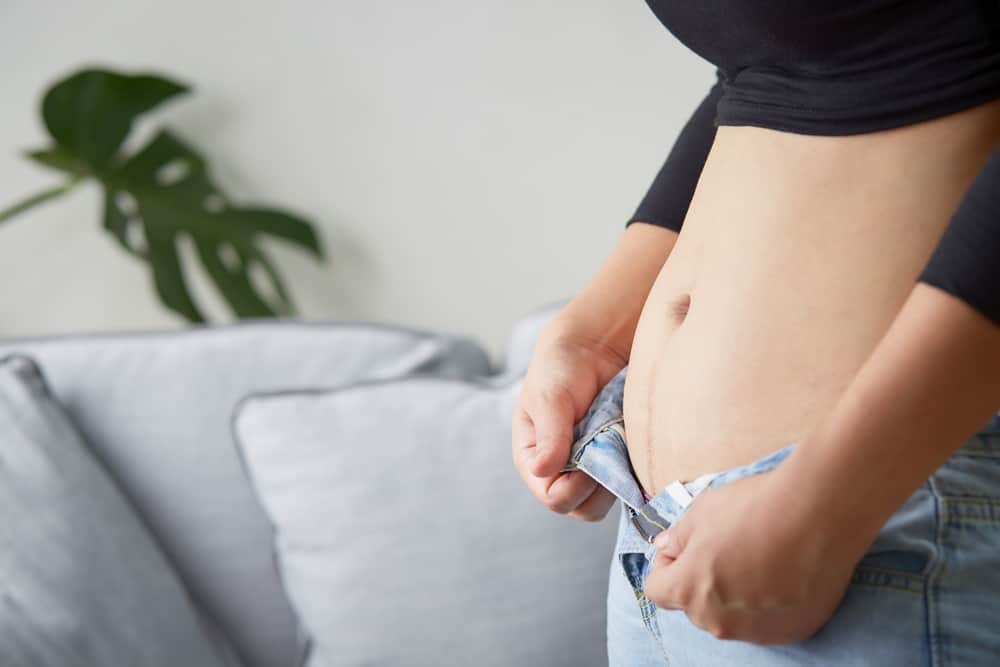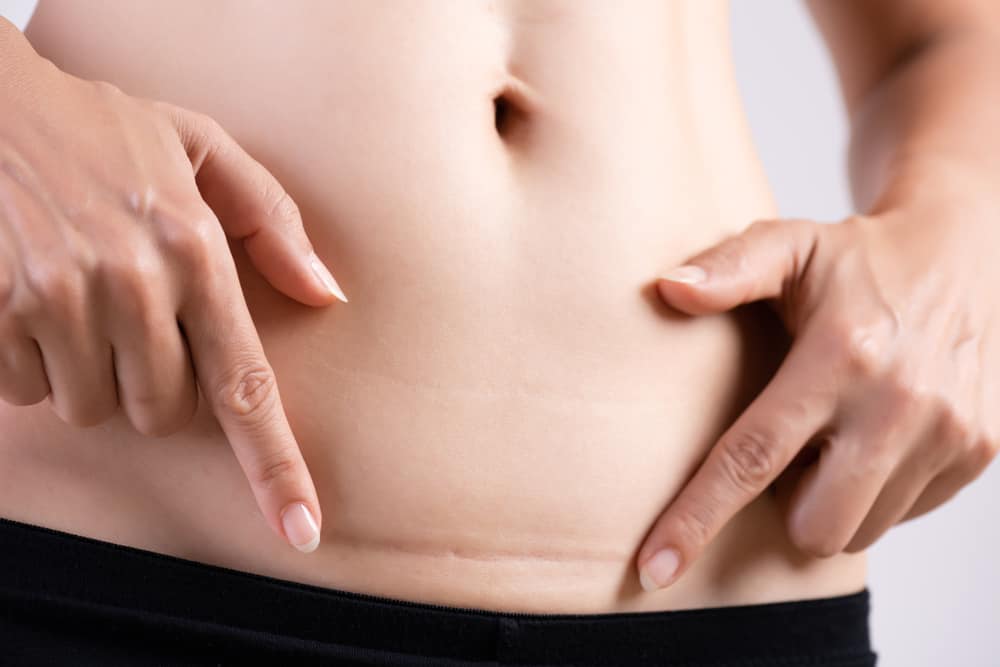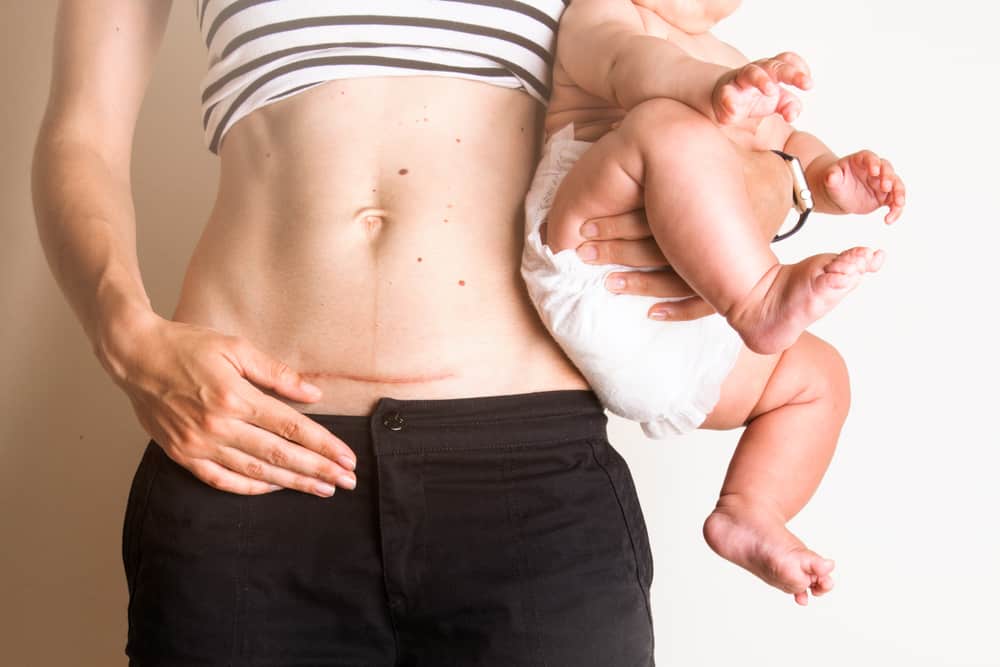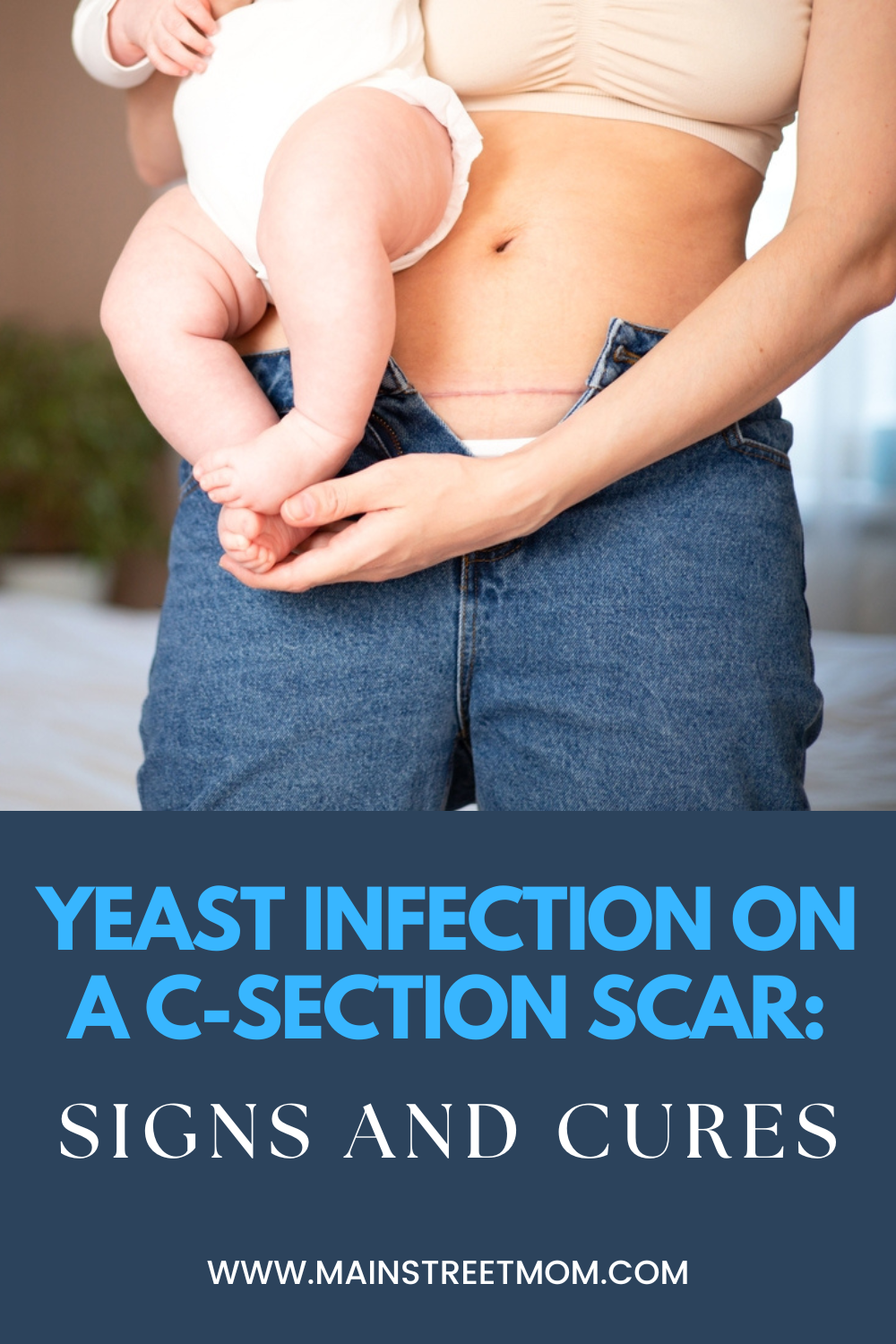A cesarean section (commonly known as the C-section) delivery is one of the toughest things a woman’s body goes through. Actually, to make matters even worse, a C-section affects your body even after the surgery. And, a yeast infection on a C-section scar is more common than you might think.
On the off chance that you don’t already know that, a C-section’s a surgery that serves the purpose of delivering a baby. During the C-section, a doctor cuts below your bikini line, goes through your abdomen and womb, and gets your baby out through the opening.
Depending on whether you know you’re going to need a C-section or you end up having one because that’s the safest way to get your baby out, there are two types of surgeries – a planned (elective) C-section and an unplanned (emergency) C-section.
During the C-section, antibiotics are administered to ward off the possibility of an infection following the surgery. Now, antibiotics are supposed to kill off bacteria in the body and should be an effective method of preventing postoperative infections.
However, there are times when they’re too effective and they manage to kill off the good bacteria, too. By doing that, they upset the body’s delicate equilibrium and enable different sorts of yeast infections to develop on different parts of the body, together with a yeast infection on a C-section scar.
Don’t let this ruffle your feathers, though. There are numerous ways to prevent and treat these types of infections, and we’re bringing you a rundown on signs, treatments, and ways to prevent a yeast infection on a C-section scar.
What’s a yeast infection?

Now, yeast grows all over the human body but happens to be the most prominent around the gut, mouth, and private parts. A yeast infection’s a common disease among women that occurs due to an overgrowth of yeast.
And, a yeast infection’s quite an uncomfortable condition for women who are recovering from a C-section because they’re beaten down and weak (which makes the recovery even harder).
According to the Center For Disease Control And Prevention (CDC), there are three main types of yeast infections caused by a yeast called Candida – vaginal candidiasis, invasive candidiasis, and infections of the mouth, throat, and esophagus.
More times than not, when women hear the words “yeast infection,” they think of private parts because they’re most commonly affected by the pesky fungus.
But, a yeast infection can occur pretty much anywhere on a woman’s body. Yeast infections grow best somewhere warm and wet, such as wounds, mouths, private parts, diaper areas, and any areas that aren’t dried properly (after a shower, for example).
Yeast infections affect three out of four women, and that attests to the fact that women are also prone to getting yeast infections on their C-sections cars.
What are the common causes of a yeast infection on a C-section scar?

With everything we’ve talked about beforehand, you might be wondering what the most common causes of a yeast infection on a C-section scar are. Whether you’ve noticed symptoms of a yeast infection or you’re wondering whether you need to keep an eye on something after your C-section, we’ve got your back.
We’ve already brushed over some of them, but the main point stands – a yeast infection can develop anywhere that features excessive yeast growth. With that out of the way, a yeast infection on a C-section can occur due to a few common factors.
First off, there’s a chance that the broad-spectrum antibiotics used during the C-section to combat bad bacteria and prevent infections end up eliminating the good bacteria, too. Because of that, the yeast fungus has enough room to grow excessively.
On the other hand, yeast infections also thrive on open incisions and surgical sites. Wound dressings keep the wound wet and create the perfect breeding ground for yeast fungus. With no good bacteria to protect the wound, you’re guaranteed to end up with a yeast infection on the C-section scar.
What are the common symptoms of a yeast infection on a C-section scar?
Considering the fact you’re wondering whether or not you have a yeast infection on a C-section scar, you’ve probably already noticed a symptom or two that you weren’t expecting to notice while recovering from a C-section and caring for your baby.
Now, the most common symptoms to keep an eye on are swelling around the wound accompanied by discomfort, burning pain around the abdomen area, wound drainage, itchiness around the wound, redness around the wound, bumpiness around the wound, high fever, and a faint odor that spreads from the wound.
Contact your doctor the moment you notice any of these symptoms. Pay attention to your symptoms as the days go by – the symptoms of a yeast infection are easily mistaken for post-delivery symptoms. In case the symptoms become worse with each day, you know for sure that something’s not adding up.
What are the ways to prevent a yeast infection on a C-section scar?

A yeast infection on a C-section scar requires immediate treatment. Because of the wound, a yeast infection can be more dangerous than other infections and can be more difficult to treat.
However, with proper medication, antifungal powders, probiotic supplements, and a nutrient-rich diet to boost your immunity, there’s no reason why you shouldn’t be able to keep your C-section scar happy and healthy.
On the other hand, you’re better off preventing the yeast infection from developing by taking proper care of your C-section scar, keeping your C-section scar dry, adding a couple of nutrient-rich foods to your diet, and wearing breathable, moistire-wiching clothes while you’re recovering.
We’re bringing you a few prevention methods down below!
1. Take proper care of your C-section scar
Whether or not you’re worried about getting a yeast infection on a C-section scar, make sure you take proper care of the scar after the surgery.
We’re sure you were probably advised by your doctor about what you should and shouldn’t do while you’re recovering, and your doctor should be your primary source of information.
What does taking proper care of a C-section scar mean, though? Granted that your doctor hasn’t advised you otherwise, wash your scar with warm water (and a gentle cleanser) every day and dry the scar every time you’re done with the washing.
Wear comfortable, breathable clothes and watch out for symptoms of a yeast infection (to ensure you can react on time). Other than that, make sure you don’t apply harsh soaps, perfumes, and lotions on the scar during the period of recovery and healing.
Proper care of your C-section scar should prevent the development of a yeast infection.
2. Keep your C-section scar dry

We know that wet, warm areas offer the perfect breeding ground for yeast which means you should always make sure you keep your C-section dry. Whether you’ve taken a shower, washed your C-section scar, or produced sweat around the area of the scar, don’t take the drying process lightly.
Keep an eye on your scar at all times, and dry the entire area the moment you notice any moisture seeping through. We know that sounds a little excessive, but that’s what’s going to prevent a yeast infection from developing around the area of your C-section.
However, be careful not to overdry your C-section scar by exposing the area to direct sunlight, a heating device (a hairdryer, for example), or an open flame. We know that the fire coming from the fireplace looks soothing, but you shouldn’t expose your scar to anything that could dry out your skin too much.
As a much healthier alternative, dry the area with a clean cloth, or a soft towel, or allow the area air-dry before you put on your clothes.
3. Try over-the-counter sprays
Now, you shouldn’t use anything your doctor hasn’t prescribed. More often than not, when you’re going through recovery and you’re healing your s-question scar, your doctor’s going to prescribe some sort of a powder or a spray that’s supposed to keep the moisture away, decrease the weeping of the wound, and speed up the process of healing.
On the off chance that your doctor hasn’t prescribed a product of this sort, don’t shy away from scheduling an appointment to check whether that’s something that could speed up the process (and prevent a yeast infection, of course).
Don’t forget that these products aren’t a must-have and that there are other ways to ensure you’re doing what’s best for your C-section scar. Between taking care of your scar, drying your scar at all times, and eating a healthy, carefully thought-out diet, you’re guaranteed to make a swift recovery.
4. Add healthy bacteria to your diet

Prebiotics, probiotics, and synbiotics should become your best friends after going through something as dangerous and draining as a C-section.
Whether you’re searching for ways to battle a yeast infection on a C-section scar or to prevent C-section-related intestinal diseases, these three things can improve the dysbiosis of gut microbiota and restore gut function.
Not only that, but these three things can put the healthy bacteria back in your GI tract, which can also help fight the overgrowth of yeast in your system. Now, there are two ways you can add healthy bacteria to your diet.
On one hand, you can consume foods that are packed with prebiotics, probiotics, and synbiotics such as yogurt, kefir, sauerkraut, kimchi, miso, kombucha, and pickles. On the other hand, you can add them via supplements (that have previously been approved by your doctor, of course).
Off the record, there’s evidence that applying cold yogurt on the wound or around the scar can soothe the burning sensation, discomfort, and itchiness. (However, we suggest you don’t do that unless you’ve consulted with your doctor beforehand).
5. Add Vitamin C to your diet
Vitamins such as Vitamin C, minerals, and nutrients are an effective weapon against a yeast infection on a C-section scar because they’re guaranteed to boost your immune system. And, your immune system happens to be one of the first systems that the Candida attacks.
When you’re dealing with a yeast infection on a C-section scar, you’re actually dealing with three things – you’re fighting off the yeast infection, repairing the damage that the yeast infection caused on your immune system, and making your immune system stronger to prevent the yeast infection from spreading.
We’re focusing on Vitamin C, but you can also boost your immune system by adding other vitamins and minerals to your diet. Other than that, you can add prebiotics and probiotics (the ones we have mentioned beforehand), consume immune-supportive herbs, cut back on caffeine, reduce stress, exercise, and rest.
6. Pay attention to what you wear

Though that might sound strange, what you wear after a C-section plays a part when we’re talking about your recovery. Wearing uncomfortable clothes can draw out the process of recovery because there’s a chance your scar might get irritated, damaged, or infected.
Now, to make sure that doesn’t happen, avoid wearing bottoms with buttons, snaps, and zippers because they might irritate or damage the scar.
Stay away from wearing elastic waistbands because they might cause chafing. Steer clear of wearing clothes that are tight, made with uncomfortable material, or made with materials that might cause you to sweat excessively.
Focus on finding pieces made with light, breathable fabrics, wide-fitting designs, and comfortable embellishments. Flowy dresses should be your go-to, but you can also wear loose-fitting trousers and blouses, super soft leggings, and comfortable sleepwear.
Read this: Marriage Issues: When To Leave Because Of Your Stepchild?

